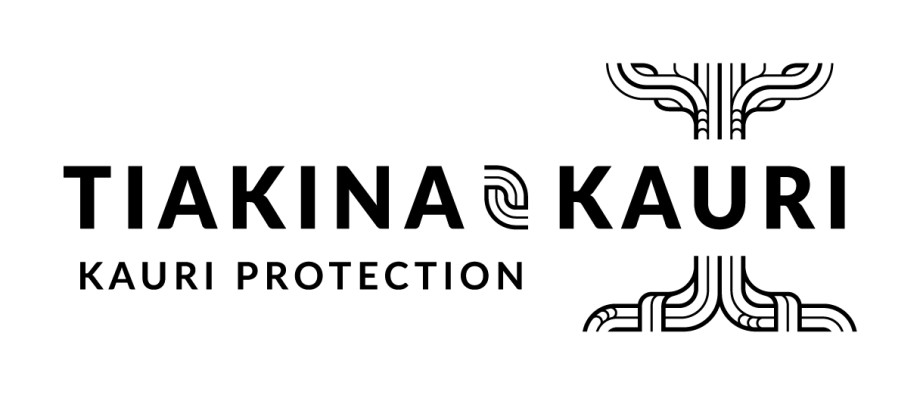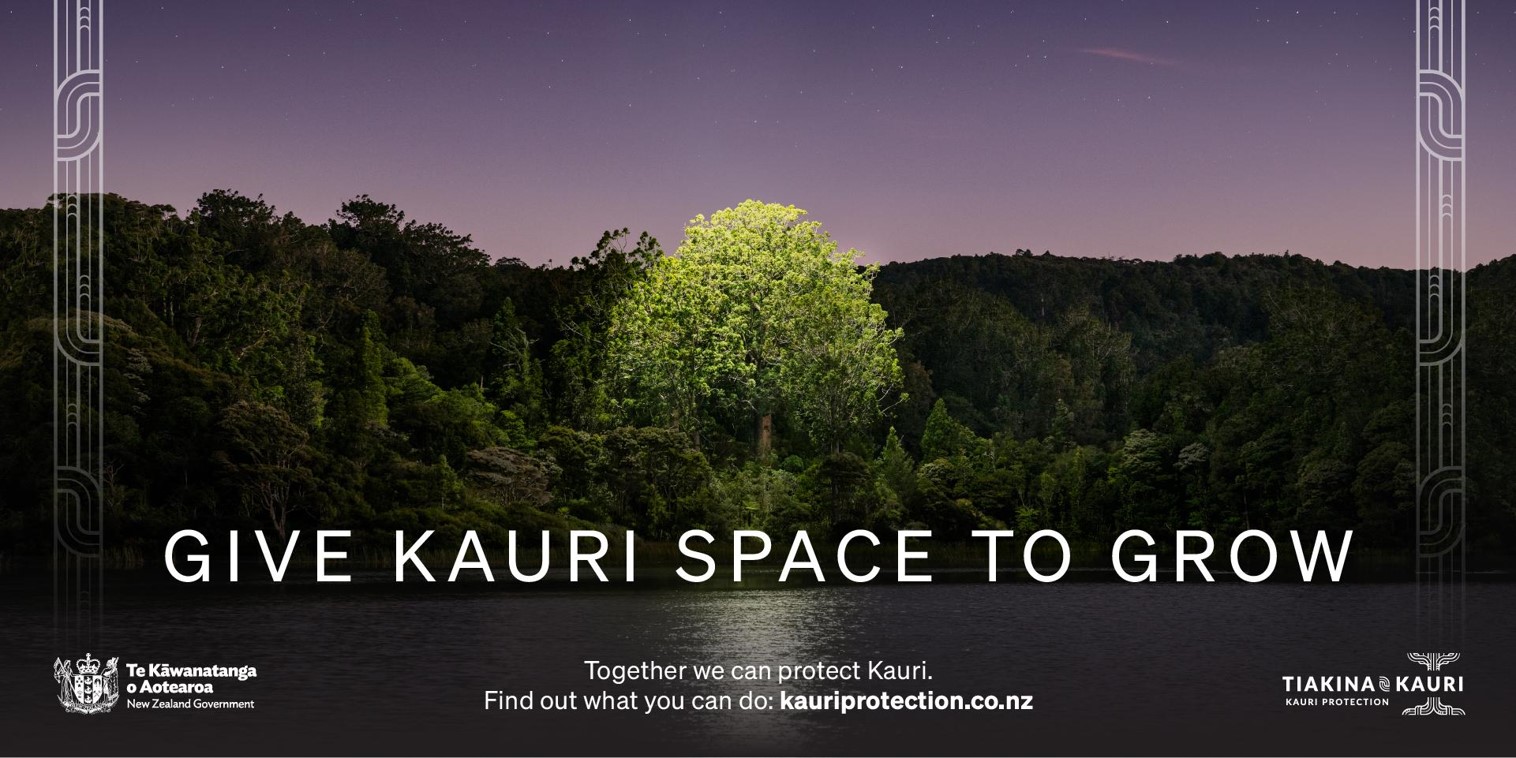Kauri Kōrero - October 2025
I hope you enjoy this issue of the Kauri Kōrero, which will be the last one from me as I am retiring this month.
Over my time managing the programme, I have seen great progress of the National PA Pest Management Plan (NPMP) which aims to protect Kauri from the PA pathogen. I have been constantly reminded that Kauri are not alone and are a pivotal part of a forest ecosystem.
The funding provided for the NPMP over these past five years has made a significant contribution to Kauri protection. The main contributor to the success of this programme, however, has been the people. The NPMP has enabled Māori to participate fully in Kauri protection, alongside and in collaboration with Crown, local and regional government and the scientific community.
This collaboration has created an energy that has allowed for information gaps to be filled and people to fulfil the responsibilities of being kaitiaki (guardians). It has also allowed for relationships between Tiakina Kauri and agencies to thrive. In addition, the potential of phosphite as a disease mitigation mechanism is now better researched and is looking very promising as a tool to reduce the impact and spread of PA.
Looking to the future, compliance with the NPMP is a key focus. We have been raising awareness through marketing campaigns over the past three years, both to ‘Give Kauri Space to Grow’ and ‘Make Kauri Protection Second Nature’. Our next steps include working on the design of an accreditation system, in collaboration with agencies and others, to deliver a comprehensive compliance programme.
I leave the programme in good heart and positioned to continue to deliver strong Kauri protection.
Kauri Ora Mauri ora.
Alan McKenzie - Manager, Tiakina Kauri Management Agency
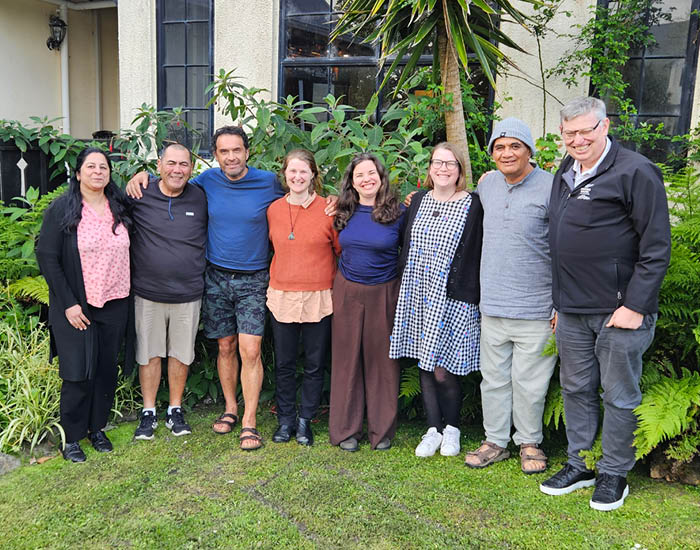
Coming together as a community
In September, the Kauri protection community came together at regional hui (meetings) which were held for both Northern and Southern (Waikato/Coromandel) Kauri lands. These were opportunities for those who had received Tiakina Kauri funding in the last financial year to share their achievements and knowledge gains with the Kauri protection community.
Each group gave a presentation on their mahi (work) and these demonstrated the immense effort and movement in the people, tools and research across Kauri protection over the last four years. Mana whenua, the Department of Conservation, QEII Trust and regional councils were among those who presented.
Dr Ian Horner also presented at both events and shared how research on Phytophthora agathidicida (PA) shows the ability to control the pathogen, as long as people are enabled to continue the excellent work.
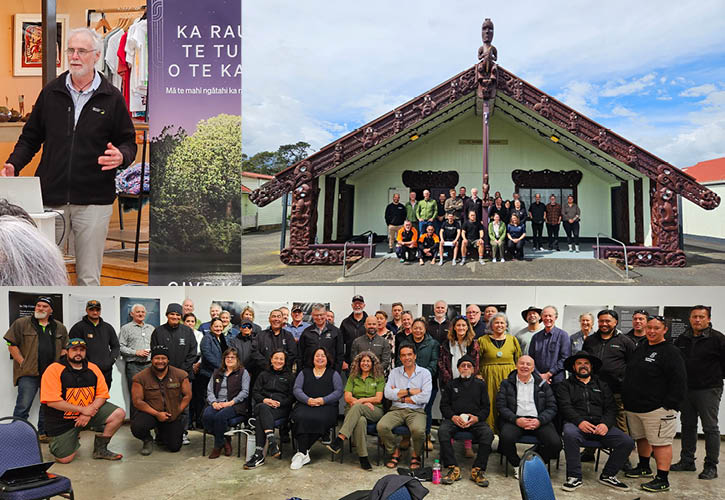
As part of the Southern regional hui, Nick Hamon (Te Ara Hou Kennedy Bay Ltd) hosted a group at Kennedy Bay, where funding from Tiakina Kauri has enabled the construction of wild stock exclusion fences. Just like people, pigs and other wild animals can pick up Phytophthora agathidicida (PA) infected soil as they walk through the forest, while also damaging delicate Kauri roots. Keeping these species away from both infected and healthy Kauri trees is vital to protecting these trees.
The group was shown both the pig exclusion fence which continues under the ground to combat burrowing pigs, and a cattle exclusion fence. In addition to building this fence, Te Ara Hou Kennedy Bay Ltd has also removed 37 feral cows from a herd of approximately 43 in this forest. This impressive and inspiring project was a fantastic way to round out the hui.
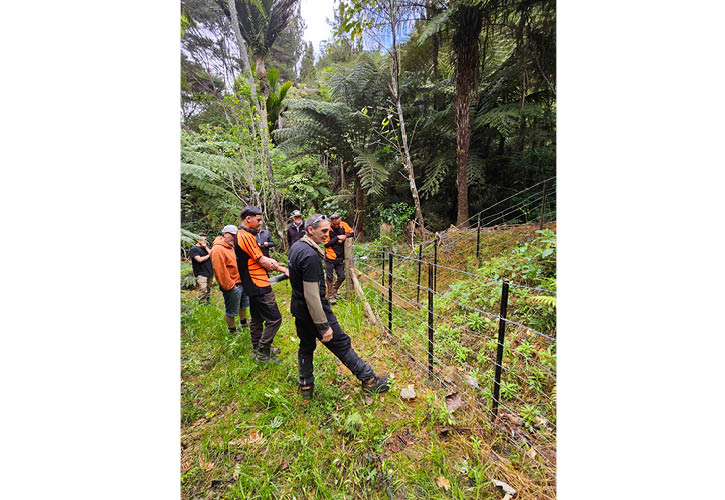
QEII pig control
QEII National Trust is an independent charitable trust that partners with private landowners to protect sites on their land with covenants. A covenant is an agreement between them and a landowner to protect land forever. The landowner continues to own and manage the protected land, and the covenant and protection stays on the land, even when the property is sold to a new owner.
Tiakina Kauri has invested in 34 QEII Trust projects, including fencing works, controlling goats and pigs, monitoring, track work and controlling weeds.
Just like people, pigs and goats can pick up soil which has been infected with PA as they walk through forests. Pigs and goats often roam quite widely, trampling and spreading soil in their wake, which can bring the PA pathogen into direct contact with delicate Kauri roots.
While using dogs to hunt pigs has been effective at reducing pig numbers in the past, dogs tend to scatter pigs and make them harder to control. One landowner using pig traps wanted to control pigs of all ages and sizes when they arrived on the property and the Tiakina Kauri funding enabled their pig trapper to use an innovative mix of motion triggered cameras to let them know of pig reinvasion.
Between three QEII adjoining covenants that include this landowner’s covenant, approximately 39 pigs were caught and killed in 10 months, and the visible benefits to the forest as a whole can now be seen. The reduced number of pigs mean that less seeds and seedlings are being eaten, and the forest can grow.
In another covenant, the same pig trapper, removed 137 pigs in seven months using a network of traps and cameras. These trapping techniques are making a huge difference to forest health by reducing wild pig numbers.
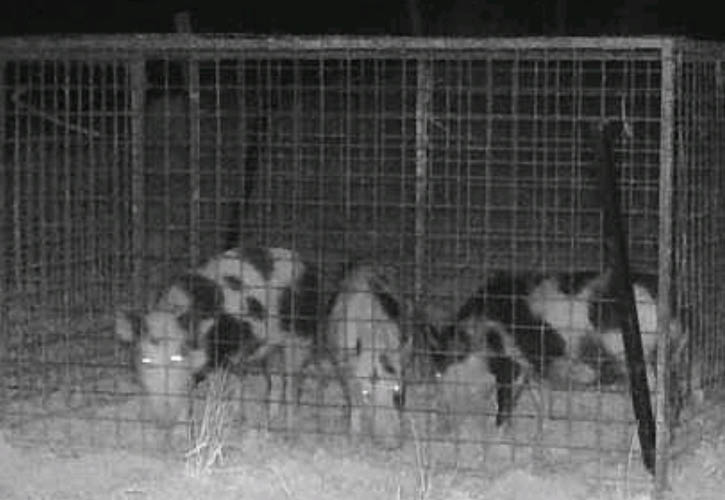
Kaitaia College PA education
Year 10 students at Kaitaia College have been spending time learning about Kauri ora (health) and the PA pathogen, both through a western science and mātauranga Māori lens.
They began their project by learning about the pūrākau (traditional narrative) of Kauri and Tohorā (whale). In this story, these two brothers are bound by a relationship of care and reciprocity.
From there, the class explored the western science side of PA. They investigated how disease spreads in Kauri forests, the biology of the trees, and the methods researchers use to protect them. They grew mould on bread to find the most suited conditions for growth. They also timed sucking water up a straw and then added holes so the students could understand how much harder it is to suck, linking to the effect of PA on Kauri roots. From there, they did a sound frequency study where students analysed the wave frequencies of both tree vibrations and whale songs. They discovered surprising similarities in the way living systems, whether forest or ocean, produce and respond to sound.
Drawing on knowledge from local iwi, students learned about the use of whale poultice in modern Kauri healing efforts - an inspiring example of traditional practice finding its place alongside contemporary research in the fight against PA. Local iwi and Tiakina Kauri took the students out into the forest for some hands-on learning, allowing students to experience what they had studied and use a wash station.
Throughout the project, students saw how cultural stories can carry environmental wisdom, and how that wisdom can guide scientific inquiry. It was a powerful reminder that the health of the forest and the ocean are deeply connected, and that caring for one means caring for the other.
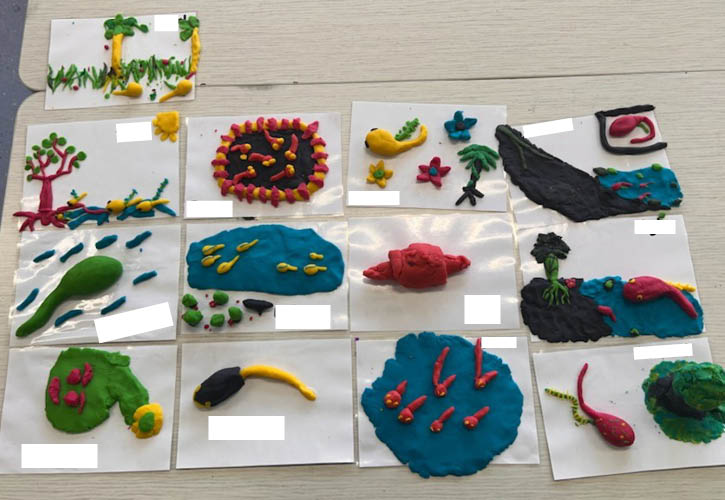
‘TREAD’ - a new lens
Rena Misra, a student at Epsom Girls Grammar School has shared her final design studies project with us – a campaign called TREAD which is focussed on raising awareness about PA and its impact on Kauri trees.
She shared, “At the start of the year, I knew I wanted to take on a project connected to environmental science, because that’s an area I’ve always been passionate about. While researching different environmental issues, I came across PA and was struck by the seriousness of the problem and the impact it’s having on our native forests. The more I read, the more I wanted to use my project to explore how design could help people understand the issue and encourage them to take action.
“Throughout my work, I kept coming back to Tiakina Kauri campaigns, resources and reports. They really played a huge part in how I approached the project, and I often used them as a reference to understand the problem as well as to consider how important messages could be shared with the public. I wanted my own project to build on this - to take the science and practical advice and present it in creative ways that might capture people’s attention - particularly youth - and make the issue feel real to them.
“One of my favourite parts was designing a portable cleaning kit for forest users, to allow more access to practical tools to help protect Kauri.”
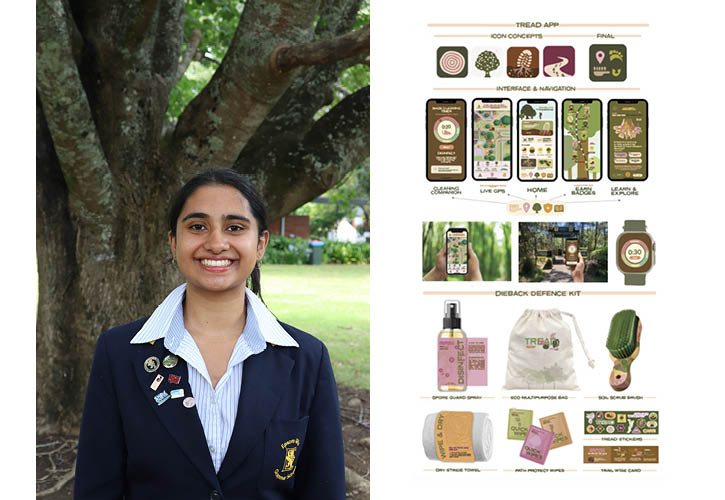
Kauri Community
As we work together to protect Kauri, we are also protecting the species that call them home. Over their full life of 500–2,000 years, these trees become a kāinga (home) and a habitat to a variety of special animals, plants and fungi. We look forward to featuring these species over the coming newsletters.
– Te Kawa Robb
Kiwi
North Island brown kiwi are one of the five kiwi species, and one that can be found living in Kauri ngahere (forest). These nocturnal manu (birds) spend the day resting in burrows and then emerge at night. Kiwi are very territorial and will fight with one another over their patch in the ngahere.
Kiwi eat small invertebrates like worms, beetle larvae and wētā and search for these with their long beak. As Kauri grow, they drop their lower limbs. These fallen branches and leaves provide excellent habitat and food sources for kiwi. A lot of insects that kiwi eat live in this leaf litter of the forest floor. Kauri can create mulch that is up the two metres deep around them from their fallen leaves.
Credit: Caiden B
Around 90% of kiwi chicks die before they are six months old and only 5% make it to adulthood. Introduced species such as stoats are responsible for many of those deaths, while pet dogs are also a big threat to kiwi. Kiwi have a strong smell which attracts dogs, and even being picked up by a dog can kill these birds due to their delicate bones. You can help keep them safe by keeping your dog on lead in areas where there are kiwi.
Want to know more about Kauri protection?
Want to know more about Kauri protection and the National Pest Management Plan (NPMP)? Our website has a range of resources for people living, recreating and working around Kauri. You might see some advertisements coming up from December, encouraging different forest user groups to learn how they can make Kauri protection second nature.
We are also updating our social media channels with content about Kauri and how to best protect them, including information on the NPMP.
